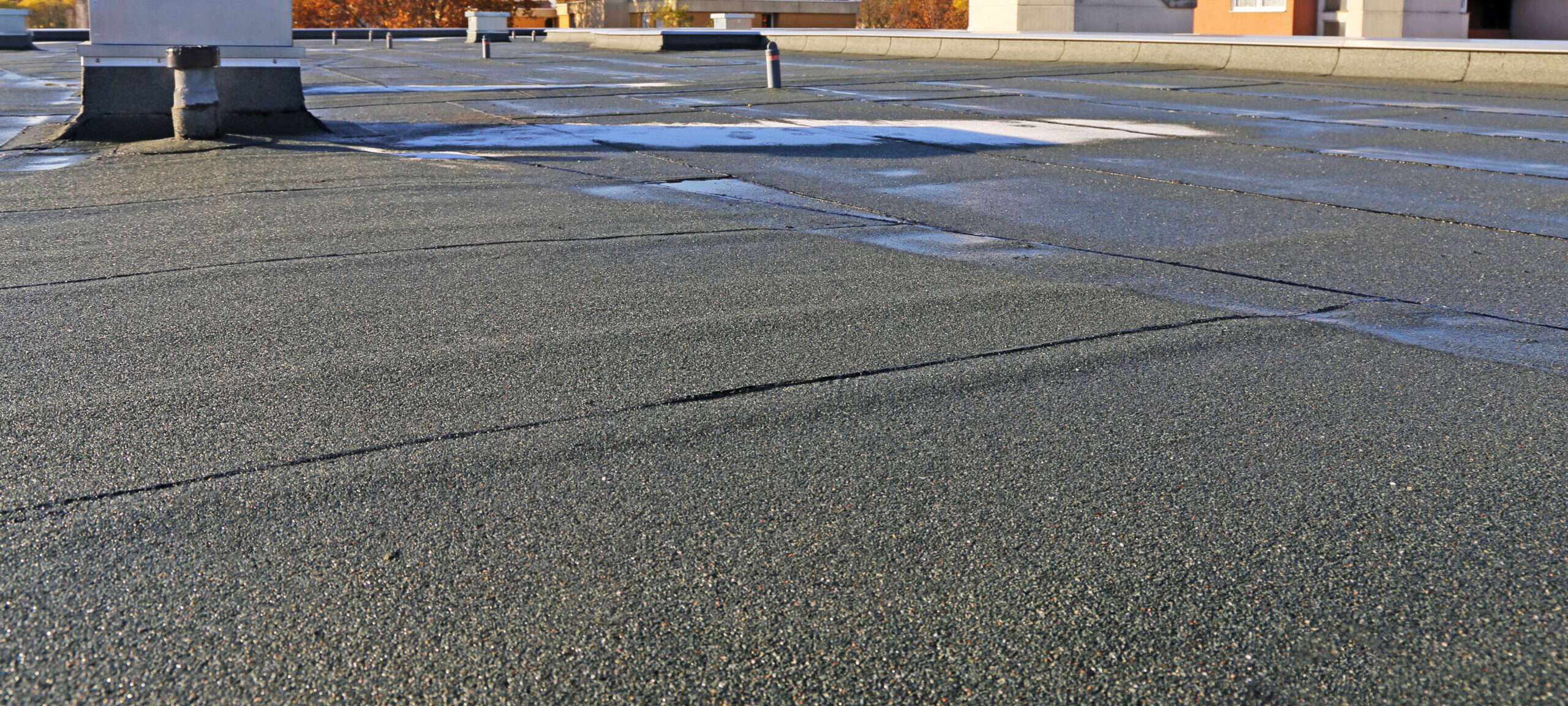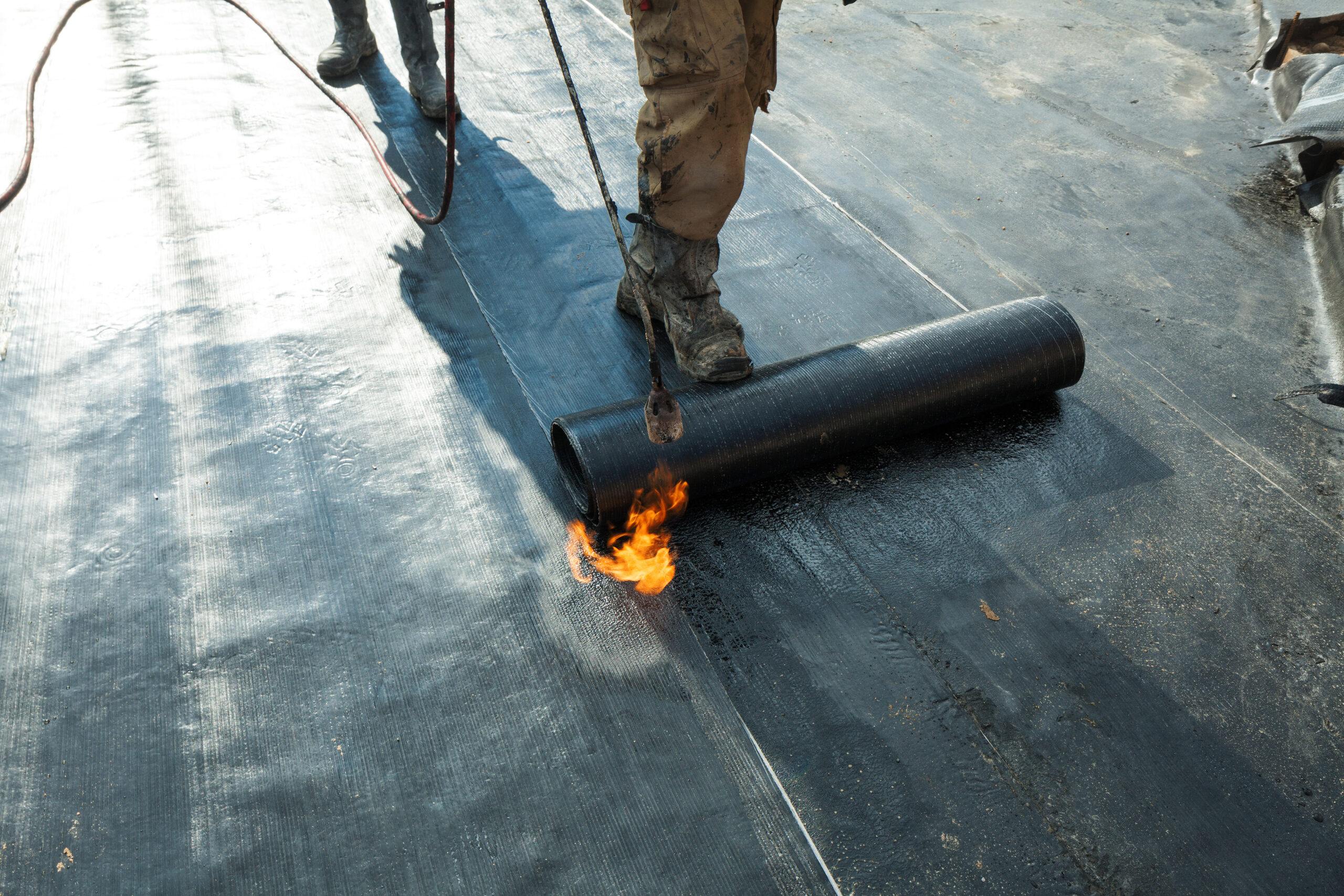Modified bitumen roofs are a tried and true system, first used in the 1960’s. This is composed of thick asphalt and granules on top to protect the asphalt, and generally comes in rolls of material that are rolled out and applied to a roof deck. These roofing systems are durable and if maintained properly, can be coated over either right away or after some time to extend their life and create a long lasting roof.
ABOUT MODIFIED BITUMEN ROOFING
Modified bitumen roofing is a pliable asphalt coated with granules on top, typically with a smooth bottom side that is adhered in a few different ways to a base layer of material. Being similar in composition to asphalt shingles, many shingle manufacturers make modified bitumen rolls, and it generally comes in rolls that are 3′ wide. It is frequently used on both large commercial roofs as well as lower slope areas of houses, such as porch roofs. Modified bitumen is not the same as roll roofing – it is a much more durable and overall superior product due to it’s composition as well as it’s application.

Modified bitumen can be used in any climate, making it suitable across the state of Arizona. Depending on your climate zone, it can be coated with a cool roof coating that reflects the sunlight better. Over time, once the modified bitumen roof has been in place over 10-15 years, it can be coated with a silicone or other type of roof coating to extend the life by an extra 5-10 years or more. Often times on commercial roofs, when tearing them off, you’ll find that the very base layer at one point was a modified bitumen roofing – it’s a versatile base coating and many other roof systems can be installed directly over it when it has used up its life.
THE MODIFIED BITUMEN ROOFING SYSTEM
Modified bitumen can be heat applied (torched down), cold adhered, hot adhered (hot tar) or self adhered onto a roof deck.
The first step is making sure the roof deck is sound and has at least a 1/4″ slope over every foot. If this is not met, additional framing can be done over the existing roof deck, or insulation board and taper board can also be installed.
In torched down modified bitumen system, a base layer is installed onto the roof deck, typically a self adhering asphalt material. Then, the roll of modified bitumen is rolled slowly along the roof and heated up with a torch as you go, so the modified bitumen melts and is then compressed into the base layer. Each successive roll of modified bitumen is lapped over the previous roll by a few inches and then torched down, creating a continuous roofing system that drains towards the tapered areas. This is one of the more common application techniques today, and M&M Roofing has installed this type of roof all over Arizona.
In cold adhered, a cold application compound is applied to the base layer and the rolled roofing is applied over this and allowed to dry.
In hot tar applications, a hot tar machine is brought to the jobsite and tar is heated up on the job, piped to the roof, and poured in sections. Then, the modified bitumen roll is applied into this. M&M Roofing has hot tar machines and can install this type of roof around Arizona.
Lastly, there are self adhered products on the market that come with adhesive on the back to hold the roll down to the roof. We prefer not to use this type of modified bitumen as the adhesive is not as sticky and strong as any of the other methods.

LIFESPAN AND WARRANTIES
ABOUT M&M ROOFING
M&M Roofing has been installing modified bitumen low slope roof systems across Arizona since 1984. We service the entire state, including Tucson, the Phoenix metro (Queen Creek, Gilbert, Chandler, Phoenix, Tempe, Scottsdale, Glendale, Goodyear, Avondale, Peoria and outlying areas), Prescott, Flagstaff, Kingman, and everywhere in between. Give us a call to schedule a free consultation.

